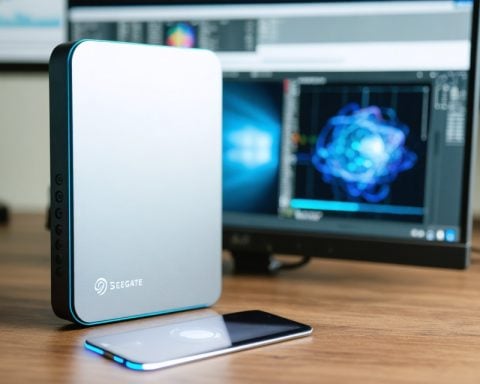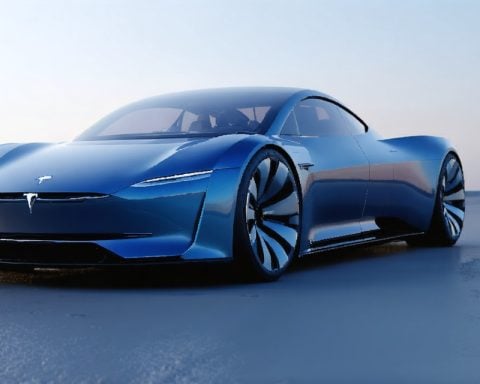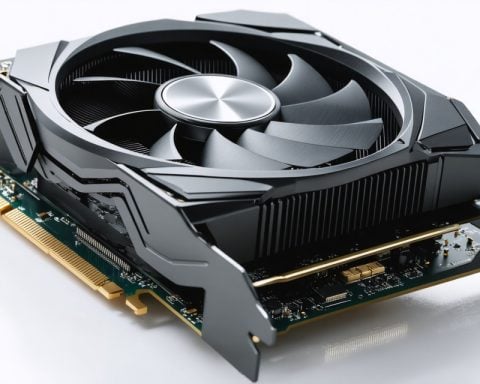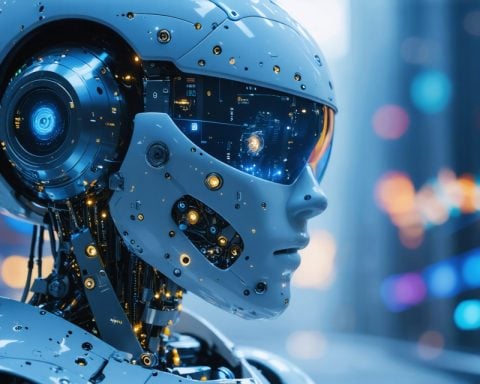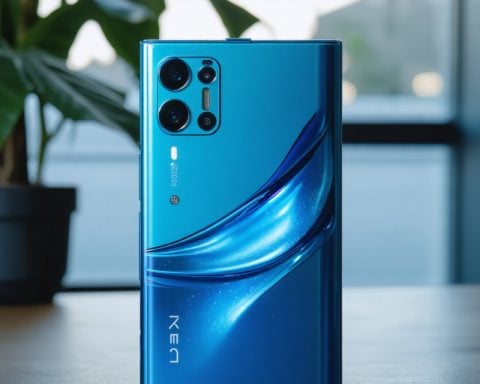- Tesla is expanding into humanoid robots, with the Optimus project aiming to relieve humans from repetitive tasks.
- The potential market for these robots is envisioned to be worth $10 trillion, although some doubt Musk’s ambitious forecasts.
- Tesla remains a dominant force in the EV market, ranking second globally with 1.77 million vehicles sold in 2024.
- The Model Y is now the world’s best-selling car, despite increasing competition challenging Tesla’s market share.
- Autonomous driving and Tesla’s Dojo supercomputer are central to future revenue growth, making self-driving cars a near reality.
- Investors are keenly observing Tesla’s evolution beyond automotive success, questioning if it will redefine industry frontiers.
In the world of electric vehicles, Tesla is not just a name; it’s a revolution. Once riding the euphoric waves of market highs, the company stands ready for its next audacious leap—a tantalizing vision of humanoid robots mingling with cars on autopilot.
Imagine a world where robotic Servitors named Optimus might stroll out of a sci-fi movie into a workplace near you, designed to relieve human hands from repetitive and dangerous tasks. Elon Musk, Tesla’s maverick CEO, envisages a $10 trillion marketplace with these mechanized beings. Skeptics, however, caution with tales of Musk’s notorious penchant for bold, sometimes overreaching, predictions. The Optimus project demands training complexities surpassing even Tesla’s ambitious ventures into full self-driving programs.
Yet, while the notion of bipedal robots is exhilarating, pragmatic souls might wisely heed caution, putting it on the experimental sidelines rather than the main stage.
Meanwhile, Tesla’s automotive facet continues to demand the limelight. In 2024, the brand shifted gears, placing second worldwide as an EV maker with 1.77 million vehicles sold. The Model Y clinches the crown as the globe’s best-selling car. Yet even with success, whispers of decelerating growth emerge, hinting at fiercer competition biting at Tesla’s tailpipes.
Autonomous driving may illuminate the path ahead, potentially unlocking a mother lode of revenue. With Tesla’s Dojo supercomputer poised over fathomless data streams, the dream of self-piloted cars seems less a flight of fantasy and more tangible tech on the verge.
For investors watching from the wings, the question lingers: Will Tesla become more than motors? Perhaps Musk’s vision will prove not just possible, but inevitable—only time will see the script unfold.
Are Tesla’s Optimus Robots the Future, or Just a Sci-Fi Dream?
How-To Steps & Life Hacks
To understand how Tesla’s innovations in robotics and autonomous vehicles might integrate into daily life, consider these steps:
1. Engage with the Technology: Familiarize yourself with Tesla’s existing tech such as their Full Self-Driving (FSD) capabilities. Watch tutorials to understand navigation and software updates.
2. Visit a Tesla Showroom: Experience the hardware firsthand. Ask representatives about Tesla’s future plans and prototypes, especially regarding Optimus and other AI-driven technologies.
3. Stay Updated on Developments: Follow reputable news sources, join forums, or subscribe to Tesla’s updates.
4. Leverage AI in Current Experiences: Incorporate AI tools in your work; experiment with automation to understand similar benefits that Tesla aims to replicate with robots.
Real-World Use Cases
Optimus aims to automate tasks considered mundane or hazardous. Here are potential applications:
– Manufacturing: Robots handle repetitive and assembly tasks, increasing efficiency and safety.
– Healthcare: Assist with patient handling and logistics within facilities.
– Agriculture: Perform laborious farming operations like planting and harvesting.
– Hospitality: Serve customers in hotels and restaurants, enhancing service reliability.
Market Forecasts & Industry Trends
Tesla’s ambitious projects place it at the intersection of various industry trends:
– EV Market Growth: Predicted to grow at a compound annual growth rate (CAGR) of 18.6% from 2021 to 2030. [Source: Allied Market Research]
– AI and Robotics: The AI industry is forecasted to hit $190.61 billion by 2025. Humanoid robotics could claim their share if Tesla delivers.
– Autonomous Vehicles: Autonomous driving technology could redefine transport industries, with legislation and infrastructure slowly evolving to support them.
Reviews & Comparisons
Tesla’s dominance lies in its superior range, software updates, and autonomous potential. Critics point to lingering obstacles, such as:
– Competition: Rivals like NIO and Rivian offer competitive alternatives, focusing on specific niches like luxury or adventure.
– Features: Tesla’s user interface and software commitment are unmatched, but build quality occasionally faces scrutiny.
Controversies & Limitations
Here are some concerns frequently discussed:
– Safety Concerns: Autonomous systems and robots in human environments need extensive safety validations.
– Ethical Implications: There are debates on job displacements due to robotics.
– Developmental Delays: Tesla is known for ambitious timelines that are sometimes unrealistic.
Features, Specs & Pricing
– Optimus Robots: Expected to primarily serve industrial purposes at initial launch, with pricing undetermined as it remains in the R&D phase.
– Vehicles: Tesla continues to offer diverse models with varying specifications. The Model Y ranges around $54,990 in the US.
Security & Sustainability
– Data Security: Tesla uses encryption and has mechanisms to update and secure its software.
– Sustainability: Tesla’s mission aligns with sustainability, from solar products to electric vehicles.
Insights & Predictions
Tesla’s Optimus has potential but will require significant time before seeing broad adoption akin to EVs today. Tesla’s advancements in AI could accelerate robotics deployment, contingent on regulatory landscapes.
Tutorials & Compatibility
– Compatibility: Tesla’s vehicles integrate with smart homes and provide API access for custom applications. Users can explore platforms like GitHub for community-driven enhancements.
Pros & Cons Overview
Pros
– Pioneering technology with strong brand recognition.
– Potential to revolutionize daily industrial tasks.
Cons
– Financial risk due to development costs.
– Possible regulatory and ethical challenges.
Actionable Recommendations
– Stay Informed: Engage with platforms like Tesla and participate in forums.
– Invest Wisely: If investing, keep a balanced portfolio to mitigate risks.
– Adopt AI Mindset: Start integrating AI solutions in personal or professional settings to get ready for future innovations.
These quick tips and insights provide a foundational understanding of Tesla’s current trajectory and future potential. For ongoing updates, follow reputable technology and financial platforms to track Tesla’s ambitious reach beyond motors.



